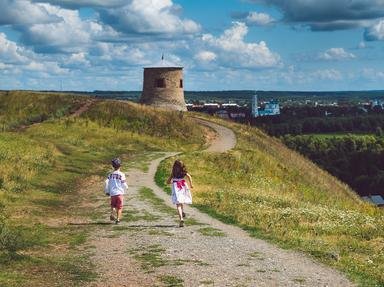Quiz Answer Key and Fun Facts
1. Located in an area of Rome near to a forum named after him, Trajan's Column commemorates the Emperor Trajan's conquest of which area of the Roman Empire?
2. Another of the buildings in Rome that is named after the Emperor Trajan is a market, but what is the modern day equivalent of the market that people would visit today?
3. The Pantheon in Rome is one of the most complete Roman buildings in existence. Out of which modern day material is the dome constructed of, which the Romans helped perfect long before it came in to commercial use in the 19th century?
4. Although little remains of the Circus Maximus today, which sport did Romans flock to see take place there?
5. The Via Appia (Appian Way) was once an important route into Rome. Important people could be buried alongside the road.
6. The Baths of Caracalla is one of the Roman Empire's largest bath complexes that survive today as a ruin. Which modern day event can be seen at the baths?
7. Also known as the Flavian Amphitheatre, the Colosseum in Rome was famous for battles between gladiators. The Colosseum could be flooded so important naval battles could be staged for the public.
8. The ruins that appear in this image are situated upon the Palatine Hill in Rome. Which important person would have once lived here?
9. One of the more unusual Roman remains that can be found in Rome is a pyramid. Which part of the Roman Empire though was most famous for this type of structure?
10. Aqueducts were important structures for the Roman Empire carrying which fluid into towns and cities?
Source: Author
mcsurfie
This quiz was reviewed by FunTrivia editor
NatalieW before going online.
Any errors found in FunTrivia content are routinely corrected through our feedback system.


